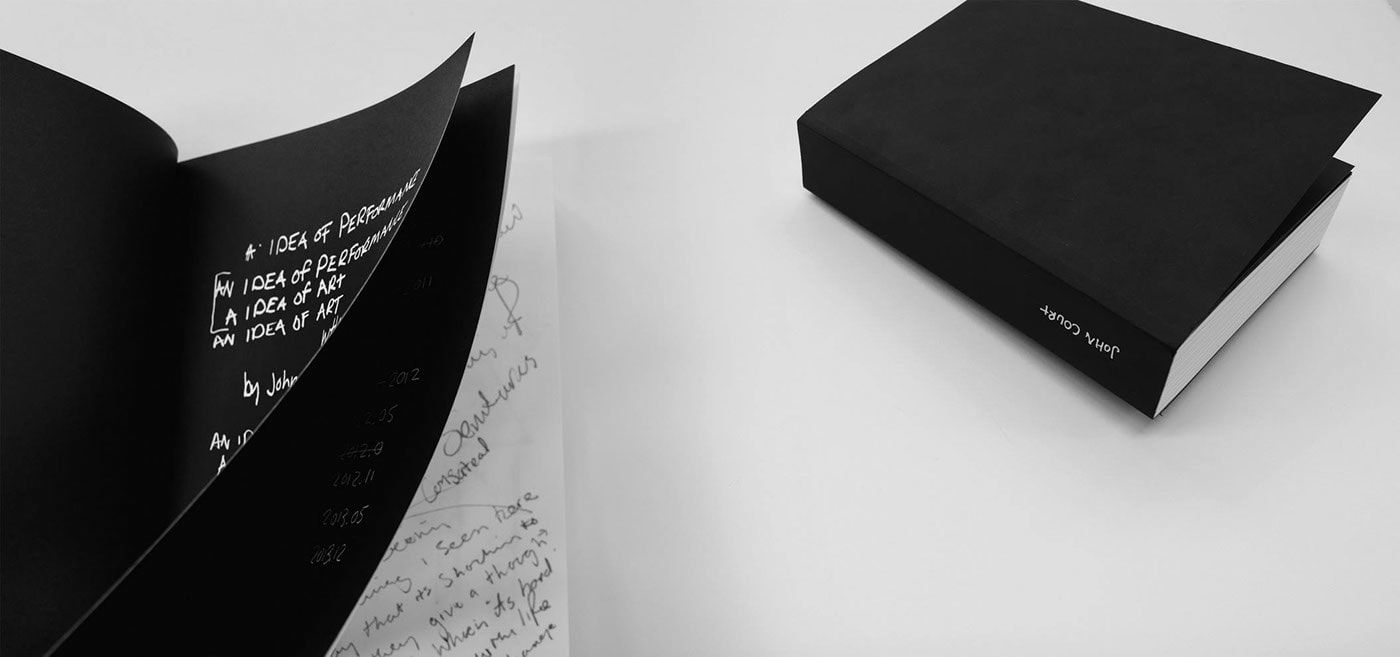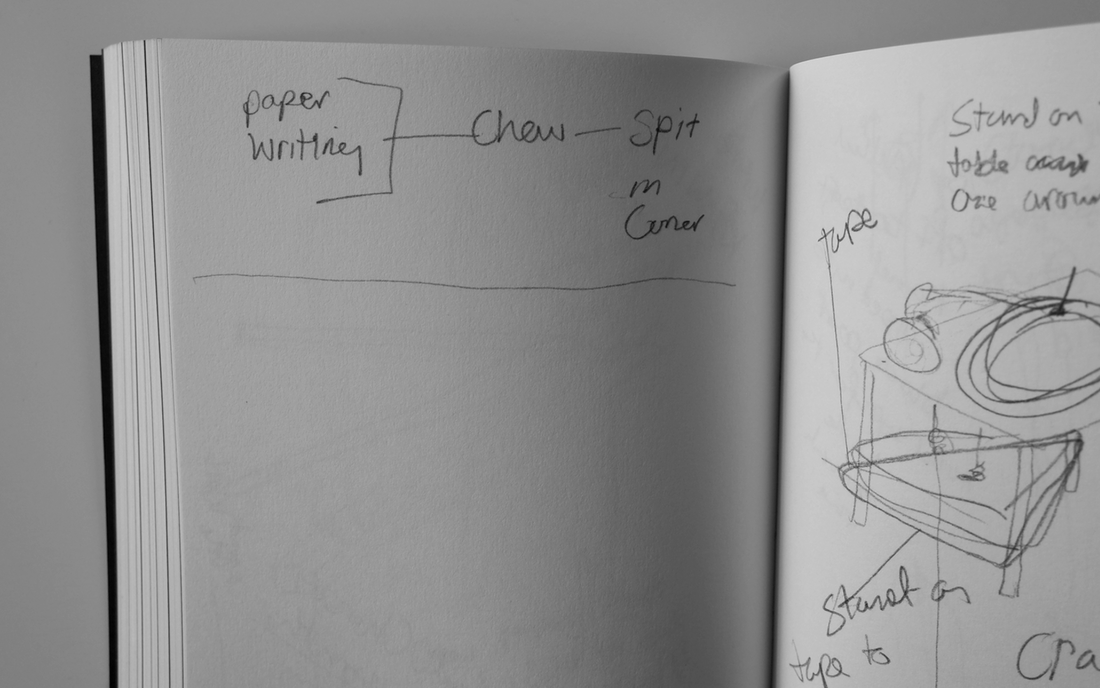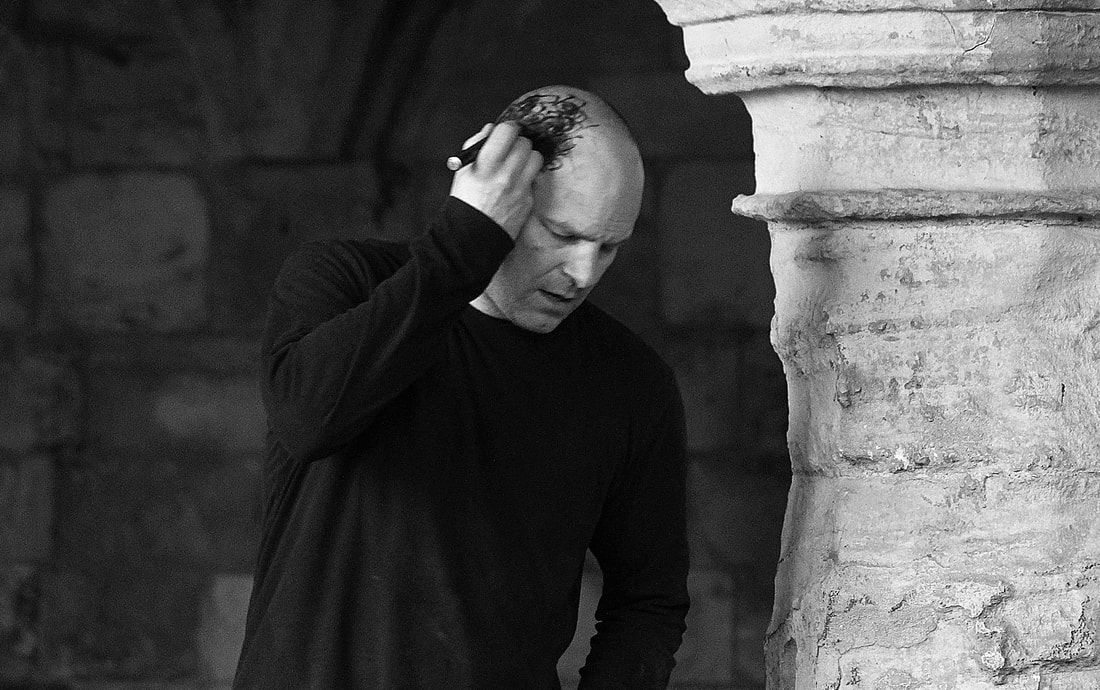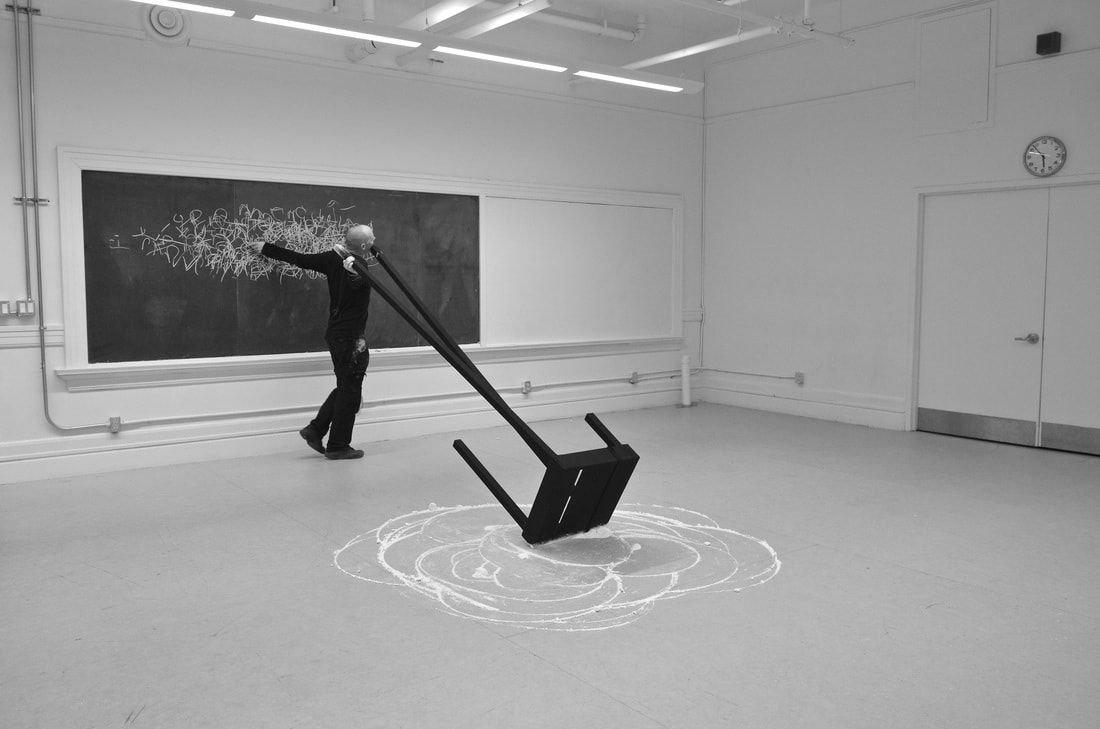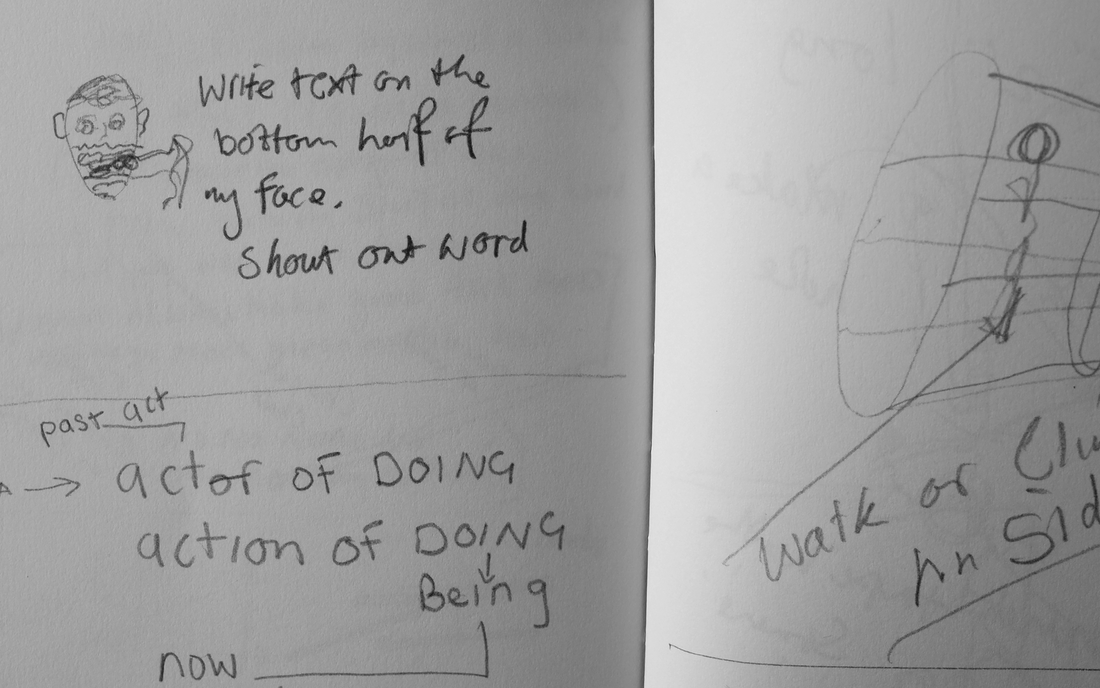Nathan Walker Write Knowing: On John Court May 1st, 2017
Photograph by Roma Auskalnyte
I am delighted to have a short text on the language-centred performance actions of John Court published in 'an idea of performance a idea of art: By John Court' (Frame Contemporary Art, Finland 2017). This large volume contains Courts drawings, notes, sketches and ideas for performance from his notebooks over a period of five years. Other contributing authors include Márcio Carvalho, Phil Sawdon, Sandra Johnston, Victoria Gray, Jonas Stampe, Yingmei Duan, Deborah Harty, Louise Clarke, Shannon Cochrane and Dider Morelli.
I am delighted to have a short text on the language-centred performance actions of John Court published in 'an idea of performance a idea of art: By John Court' (Frame Contemporary Art, Finland 2017). This large volume contains Courts drawings, notes, sketches and ideas for performance from his notebooks over a period of five years. Other contributing authors include Márcio Carvalho, Phil Sawdon, Sandra Johnston, Victoria Gray, Jonas Stampe, Yingmei Duan, Deborah Harty, Louise Clarke, Shannon Cochrane and Dider Morelli.
Court's performances are incredible encounters that occur over extended-durations. The image below is from his most recent performance in York (November 2017) organised by Victoria Gray and myself as part of Oui Performance series of events entitled 'Solo Site'.
Photograph by Nathan Walker
Below is an excerpt from my text on Court's work in relation to his use of language and writing in performance.
I read Court’s instruction ‘write KNOWING’ as a statement of practice. Court is able to understand the ideas, presented in this volume, only through the performance. That is, only when these ideas are explored over an extended durational performance do they become known. Court creates situations where ‘knowing’ can become present over time, he writes this here as:
>Performance Idea (Meaning) = Performance Being (Knowing)
In performance art we construct a situation where we can spend time with our ideas in order to fully know and understand them. For Court these materials and ideas are language-centred and build on a complicated relationship between his own literary and linguistic history. We see this in his performance ideas that appropriate literary objects like books and what we might call ‘writing-objects’ like school desks, marker pens, paper, and through the acts of speaking and writing as performance tasks.
Below is an excerpt from my text on Court's work in relation to his use of language and writing in performance.
I read Court’s instruction ‘write KNOWING’ as a statement of practice. Court is able to understand the ideas, presented in this volume, only through the performance. That is, only when these ideas are explored over an extended durational performance do they become known. Court creates situations where ‘knowing’ can become present over time, he writes this here as:
>Performance Idea (Meaning) = Performance Being (Knowing)
In performance art we construct a situation where we can spend time with our ideas in order to fully know and understand them. For Court these materials and ideas are language-centred and build on a complicated relationship between his own literary and linguistic history. We see this in his performance ideas that appropriate literary objects like books and what we might call ‘writing-objects’ like school desks, marker pens, paper, and through the acts of speaking and writing as performance tasks.
Photograph by Henry Chan
In performance art we construct situations that are often difficult. We see this difficulty in Court’s ideas that encompass physical exhaustion, temporal endurance, and extreme repetition. The performance obstacle for Court is often language-centred and can be seen in the following (small) selection of scores for performance from this volume:
- white floor // write on the floor with white chalk
-Touch Book - Kick a Book around / Kick around dictionary
- Books covered with tape
- texts on feet
- Paper Writing - Chew - Spit in Corner
- Object in mouth and try to move or talk at same time
- Talking and Writing
- spit from mouth to glass
- making sound, shout, scream
- move against the wall use sound word to develop the space
- with right hand write on left hand
- lying on floor start writing words as you turn a rotation
- walking around in a circle when walking write on top half of body
- rip up a book then throw it on the floor
- eat a book and spit out wet paper
- walk around chair and write on body
- write a word underwater
When Court writes ‘Object in mouth and try to move or talk at the same time’, the performance task is purposefully made difficult: there is no direct path from performance idea to performance being. These ideas are indirect paths towards understanding. By appropriating the mouth and ear as spaces in which to hold and carry objects in performance his mouth / ear become physically linguistic. Instead of performing their function as emitting and receiving sound they become linguistic limbs, to hold and move objects as if they were language. As Court notes his practice uses ‘object[s] as a written language’, an indication of his exploration of words and writing as fundamental to his practice.
In performance art we construct situations that are often difficult. We see this difficulty in Court’s ideas that encompass physical exhaustion, temporal endurance, and extreme repetition. The performance obstacle for Court is often language-centred and can be seen in the following (small) selection of scores for performance from this volume:
- white floor // write on the floor with white chalk
-Touch Book - Kick a Book around / Kick around dictionary
- Books covered with tape
- texts on feet
- Paper Writing - Chew - Spit in Corner
- Object in mouth and try to move or talk at same time
- Talking and Writing
- spit from mouth to glass
- making sound, shout, scream
- move against the wall use sound word to develop the space
- with right hand write on left hand
- lying on floor start writing words as you turn a rotation
- walking around in a circle when walking write on top half of body
- rip up a book then throw it on the floor
- eat a book and spit out wet paper
- walk around chair and write on body
- write a word underwater
When Court writes ‘Object in mouth and try to move or talk at the same time’, the performance task is purposefully made difficult: there is no direct path from performance idea to performance being. These ideas are indirect paths towards understanding. By appropriating the mouth and ear as spaces in which to hold and carry objects in performance his mouth / ear become physically linguistic. Instead of performing their function as emitting and receiving sound they become linguistic limbs, to hold and move objects as if they were language. As Court notes his practice uses ‘object[s] as a written language’, an indication of his exploration of words and writing as fundamental to his practice.
